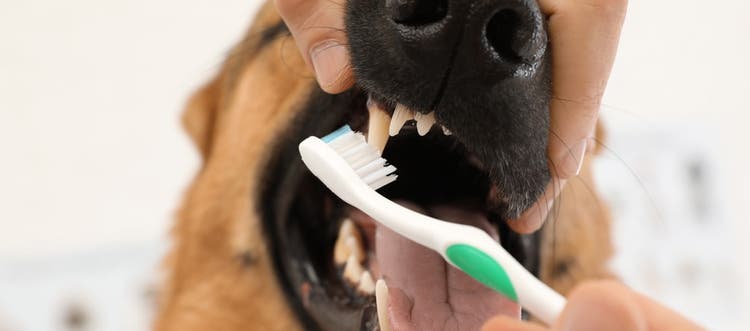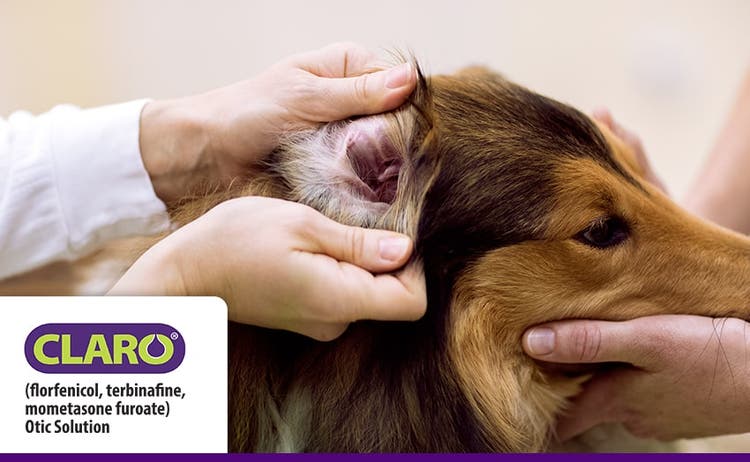Learn the best way to trim your dog’s nails quickly and safely.
Dogs’ nails need regular care, just like ours. Unless your dog spends a lot of time outside on hard or rough terrain (which will naturally keep a dog’s nails short), you’ll have to cut them regularly. If this task sounds intimidating, don’t worry — with a little know-how and patience, trimming your dog’s nails can be far easier than you might think.
How to Trim Your Dog’s Nails in 5 Steps
Trimming a dog’s nails isn’t just cosmetic — it’s important for their overall health and comfort. Untrimmed nails can put too much pressure on your dog’s toe joint, causing pain and potential joint issues or arthritis over time. So, it’s important to clip those nails before they get too long! Use our guide to cut your dog’s nails quickly and safely.
1. Gather Your Supplies
Before you start trimming, make sure you have all the necessary supplies close at hand.
- A nail trimming or filing tool. There are a few options when it comes to choosing a nail trimming tool:
- Nail clippers. The most commonly used device for dog nail trimming, nail clippers are tools that come in several styles and features: plier style or scissor style, ergonomic or rubberized grip, and quick-stop guard. These clippers are especially useful for cutting the thick nails of large and giant breeds.
- Guillotine nail clippers. Despite its name, this type of nail clipper is a very effective and practical tool, especially for smaller breeds. They can be easier to handle than larger nail clippers and feature a convenient area to hold the nail in place while it’s clipped.
- Nail files. Nail files usually have a small rotating wheel that grinds or files down your dog’s nail tips. Nail files are versatile: They work on thick nails as well as thin, and they trim the nails without leaving sharp edges. They also are a good solution for dogs that are scared of having their nails clipped.
- Styptic powder. This powder is useful to have on hand if you accidentally cut the quick of your dog’s nails while trimming them. Dab some of the powder onto your finger and press it on the nail to help stop the bleeding. You can also dip a cotton swab into the powder and press the powder-coated tip on the nail.
- Treats. Grab a few of your dog’s favorite treats to help them through the process, especially the first few times you trim.
2. Get Your Dog Comfortable with the Tools
Let your dog sniff the nail trimmer and file, and follow it up with a tasty treat. Next, flex the trimmers a few times so they get used to the noise they make. Then gently touch the clippers to your dog’s paw — don’t try to trim yet! — and follow up with another treat.
What If My Dog Won’t Let Me Cut Their Nails?
Take your time and go slowly — patience is the name of the game. Your dog may be anxious at the mere sight of the clippers, so you may need to extend this introduction over several days, or until they seem comfortable around the tools.
3. Start with the Front Paws
It’s time to trim! Hold one of your dog’s front paws firmly but gently, and identify where you want to make the cut.
Trim off the end of the nail. Always cut from top to bottom, and try to cut perpendicular to the nail. Avoid cutting the nail at an angle. When clipping your dog’s back nails, lay your pet on their side. This will make it easier to access and hold their back paws.
4. Avoid the Quick
The quick in each dog nail contains nerves and blood vessels. You should avoid cutting the quick, as it will bleed and cause your dog some discomfort. If your dog has white nails, you should be able to see the quick as a faint pink line. Cut no closer than 2 mm from the quick.
If you’re unsure about where to trim, it’s better to cut off too little than too much. You can always cut off a bit more later if needed. It’s never a bad idea to go to your local veterinary clinic for guidance; they can give you a demonstration on your dog.
How Do I Cut a Black Dog’s Nails?
Unfortunately, the quick won’t be visible if your dog has black nails. As you cut your dog’s nails, look for a dark spot in the center of the newly clipped edge — this is where the quick starts.
Remember to take it slow. With each clip, cut no more than 1/8" from the nail, and then check to make sure you haven’t accidentally cut the quick. Continue in this manner: clip and check, clip and check.
My Dog’s Trimmed Nail Is Bleeding — How Do I Stop It?
If you accidentally cut the quick, don’t panic. If you react dramatically, your dog could think the situation is more serious than it is, which may cause them to form a negative association with getting their nails trimmed. Instead, apply styptic powder to the affected nail until it stops bleeding, and give your dog a treat and some reassurance.
5. Give Your Dog Treats and Cuddles
You’ll have to trim your dog’s nails on a regular basis, so make it as positive as you can for your pet. When you’re finished, give them treats and praise for behaving so well while you worked.
How Often to Trim Your Dog’s Nails
Now that you’ve trimmed your dog’s nails once, you’ll need to make this task a part of your pup’s regular grooming routine. Generally, a dog’s nails should be trimmed when they touch the ground. If you can hear your dog’s nails click-clacking with every step, their nails have grown too long and should be trimmed.
How quickly a dog’s nails reach this length will depend mainly on their environment and lifestyle. The nails of a dog that lives in a city and walks primarily on pavement will stay naturally shorter than a dog with a leisurely indoor lifestyle or one that spends more time running on softer ground.
From an early age, get your dog into the habit of having their nails trimmed — they will be far more comfortable with the routine if you start when they’re young.
When to Enlist Help
If trimming your dog’s nails causes you anxiety or is simply a task you don’t like to do (and you’re not alone!), take your dog to a groomer or a vet who will trim their nails for a small fee.
If you have any concerns — for example, if you think your dog’s nails are causing them pain or discomfort — get in touch with your vet.



